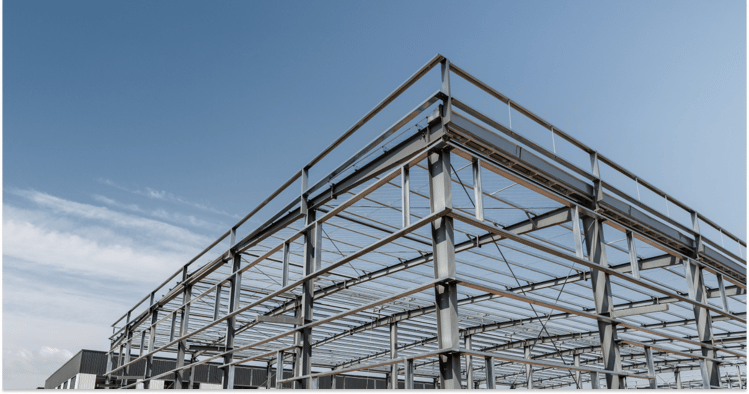
The demand to balance digitalization and sustainability in today's construction industry is more critical than ever. To meet this challenge, the prefabrication of cold formed steel has become a popular option due to its numerous benefits and efficient recycling capabilities.
We recently wrote a piece about the sustainability of cold formed steel and the comparisons of steel vs wood, which has opened up discussion about the full life cycle of steel, how is steel created and then recycled? Let's explore the life cycle of cold formed steel from its raw material state to its end use in buildings and how it can be recycled.
Crafting success with raw materials
In order to understand how cold formed steel is used in construction, it’s important to understand what it’s made up of.
The production of cold formed steel begins with raw steel, crafted by combining iron ore or scrap metal with a small amount of carbon in either a Basic Oxygen Furnace (BOF) or an Electric Arc Furnace (EAF). This molten steel is then poured into slabs that are reduced to thinner strips called ‘hot bands’ or coils. Direct reduction is becoming increasingly popular as it streamlines the process. These cold formed steel coils are typically formed into C-sections and other shapes by rolling the steel through a series of dies, giving the metal greater strength than traditional hot-rolled materials while maintaining excellent formability. The result is a light yet resilient material that can be used for various structural applications such as studs, joists, rafters, trusses, and columns.
Once formed from raw materials, cold formed steel must undergo additional steps before being ready for use in building applications. First, it must be galvanized with zinc or a similar coating, which protects against corrosion and prolongs the product’s lifespan. Next comes fabrication which includes cutting, bending, and punching holes into the metal pieces for easier assembly on-site during installation. Finally comes quality control testing, ensuring that all components meet industry standards. Each component is printed with identification codes to trace the steel back to the original producer, and the finished product to the fabricator. The components can be referenced in the building information model and finally shipped from fabricators plants to job sites worldwide.
End-of-life recycling and reuse
After years spent supporting weight loads, structures eventually come to the time when they need replacing due to their age or wear and tear. That's where recycling enters the picture. With cold formed steel, old structures can become valuable sources of raw material again; through processes including shredding, sorting, separation & compaction - scrap metal can become new coils ready for manufacturing lines once more. In some cases, demagnetising may be a necessary treatment to ensure no contaminants enter the production cycle.
This closed-loop system and the lifecycle of cold formed steel means resources are reused and creates the much-needed circular economy and a more sustainable construction environment.
FRAMECAD has a range of clients worldwide who use FRAMECAD systems and manufacturing equipment for prefabricating cold formed steel. We are proud that our approach aims at sustainable construction to reduce the impact on the environment and construct to create a better tomorrow.
Interesting facts about steel and recycling
The steel industry has a commitment to sustainability, demonstrated by their consumption of nearly 70 million tons of domestic steel scrap each year to produce new steel. This practice conserves energy, emissions, raw materials, and natural resources, allowing the production of advanced and highly recycled steel products that meet our needs. Steel recycling is an integral part of the industry's commitment to sustainability, reducing the environmental footprint of steel production while providing the public with quality steel products.
Let’s look at some more fun facts about steel and recycling:
- Steel structures can be recycled numerous times without losing strength.
- Recycling steel saves enough energy to power approximately 18 million households annually.
- North America recycles more than 80 million tonnes of steel yearly.
- Every year, nearly 69 % of all steel in North America is recycled – more than paper, aluminium, plastic, and glass combined. Since 1970, North America's average steel recycling rate has been greater than 60%.
- More than 95 % of the water used to make steel in North America is recycled.
- One scrapped car produces more than four steel utility poles.
- Each tonne of recycled steel saves 2,500 pounds of iron ore, 1,400 pounds of coal, and 120 pounds of limestone.
As one of the industry leaders working with cold formed steel, we have learnt just how it offers excellent performance characteristics combined with sustainability through every part of its life cycle, making it the ideal choice of construction material. By investing in responsible, sustainable practices of manufacturing and repurposing, we can create a built environment that benefits the entire planet & generations to come.
FRAMECAD is leading the charge in this effort, striving to reduce the environmental impact of its steel products at every stage of its life cycle – from raw material extraction to product recycling. With FRAMECAD’s commitment to responsible manufacturing practices and sustainable products, you can have confidence that your next construction project will be as eco-friendly as possible.








